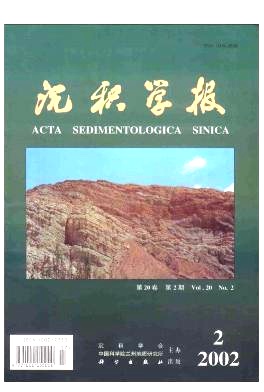HTML
| [1] | 1. 李吉均。晚新生代黄河上游地貌演化与青藏高原隆升[J].中国科学,B 辑,1996,26(4):136~146[Li Jijun.The geomorphological evolution in the upper reaches of the Yellow River and uplift of Qinghai-Xizang Pleteau[J].Scientia Sinica.Series D ,1996,26(4):316~146] 2. Ruddiman,W F,and Kutzbach,J.E.Late Cenozoic plateau uplift and climate change[J].Trans.Roy.Soc.Edinb.Earth Sci.,1990,81: 301~314 3. 李吉均。青藏高原隆升的时代、幅度和形式问题的探讨[J].中国科学,1979,22(6):608~616[Li J J.A discussion on the period,amplitude and type of the uplift of the Qinghai-Xizang Plateau[J].Scientia Sinica,1979,22(6):608~616] 4. Lijijun.Late Cenozonic magnetratigraphy (11~OMa) of the Dongshanding and Wangjiashan sections in the Longzhong Basin ,Western China[J].Geologie en Mijnbouw,1997,76: 121~134 |
| [2] | Ding Z L.Preliminary magnetostratigraphy of a thick eolian red clay-loess sequence at Lingtai,The Chinese Loess Plateau[J].Geophysical Research Letters,1998,8 (25):1 225~1 228 6. 宋友桂。六盘山东麓朝那剖面红粘土年代及其构造意义。第四纪研究。2000,20(5):463~468[Song Yougui.Age of red clay at Chaona section near eastern LiuPan Mountain and its tectonic significance[J].Quat.Sci.,2000,20(5):463~468] 7. 方小敏。临夏盆地新生代地层绝对年代测定与划分[J].科学通报,1997,42(14):1 457~1 461[Fang Xiaomin.Age-dating and classification of Cenozoic stratigraphy in the Linxia Basion.Gansu Province[J].Chinese Sci.Bull.,1997,42(14):1 457~1 461] 8. 李吉均。临夏盆地新生代地层古地磁年代与模式序列[A].见:青藏高原形成演化、环境变迁与生态系统研究学术论文年刊(1994)[C].北京:科学出版社,1995.91~95[Li Jijun.Amagnetic age-dating and classification of cenozoic stratigraphy in the Linxia Basion Gansu Province[A].Yearbook of scientific paper in the research of form evolution,environment changes and ecosystem of the Qinghai-Xizang Plateau (1994)[C].Beijing:Sciences Press,1995.91~95] 9. 陈梦熊。甘肃中部之地文[J].地质论评,1947,12:545~556[Chen Menxiong.The Physiographical Stage at the center of Gansu[J].Geological Review,1947,12:545~556] 10. 岳乐平。靖远黄土剖面磁性地层的初步研究[J].第四纪研究,1991,4:349~353[Yue Leping.Amagnetic stratigraphy study on the Jingyuan loess section,Gansu,China[J].Quat.Sci.,1991,4:349~353] 11. 文启忠。甘肃陇西盆地的黄土[J].地理科学,1982,2(3):202~209[Wen Qizhong.Loess of LongXi Basin in Gansu Province[J].Scientia Geographica Sinica,1982,2(3):202~209] 12. 刘东生。黄土与环境[M].北京:海洋出版社,1985.251~255[Liu T S.Loess and the Environment[M].Beijing:China Ocean Press,1985.251~255] 13. Ruter N W.Magnetostratigraphy of the Baoji loess-paleosol section in the north-central China Loess Plateau[J].Quat.Inter.,1990.7~8,97~102 14. Liu X M.The Chinese loess in Xifeng,I.The primary study on magnet-tostratigraphy of a loess profile in Xifeng,Gansu Province[J].Geophys.J.,1987,92: 349~352 15. Kukla,G.Loess stratigraphy incentral China[J].Palaeogeogr .Palaeo- climatol.Palaeoecol.,1989,72:203~225 16. Cande,S.C.& D.V.Kent.Revised calibration of the geomagnetic polarity timescale for the Late Cretaceous and Cenozoi[J].Geophys.Res.,1995,100: 6 093~6 095 |






 DownLoad:
DownLoad: